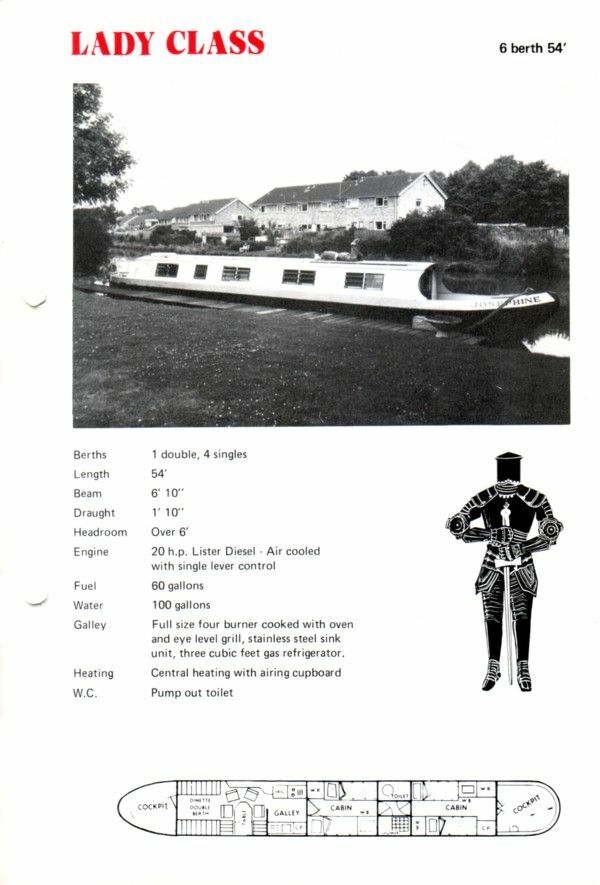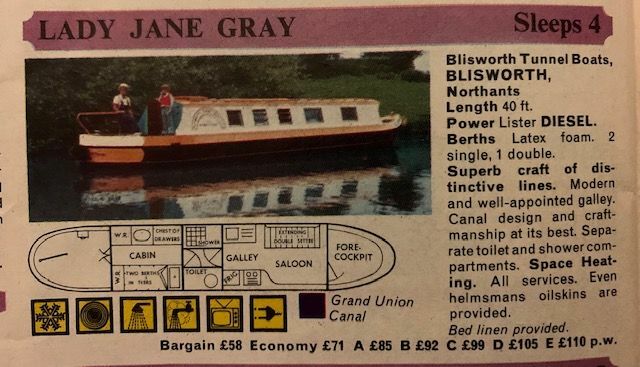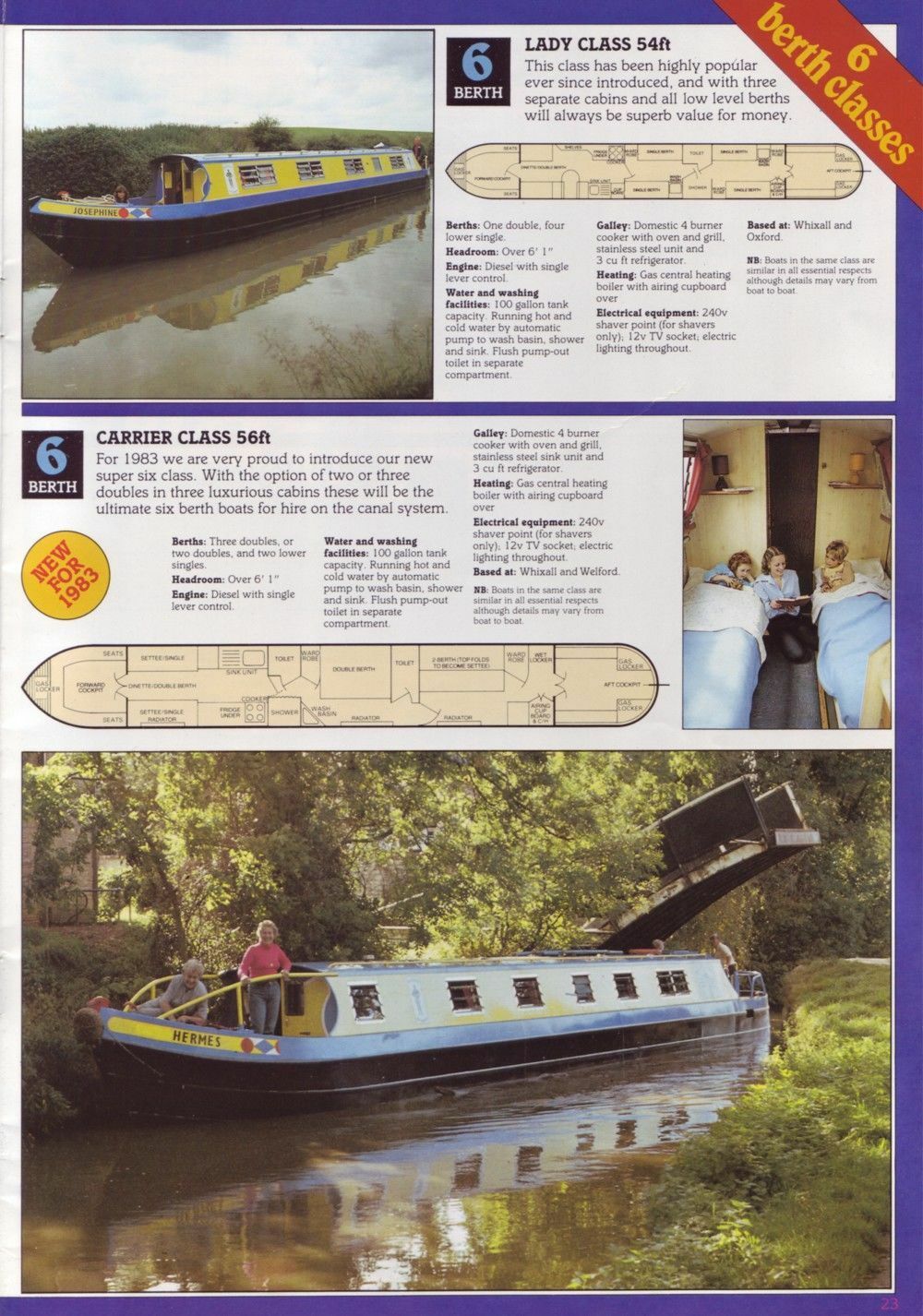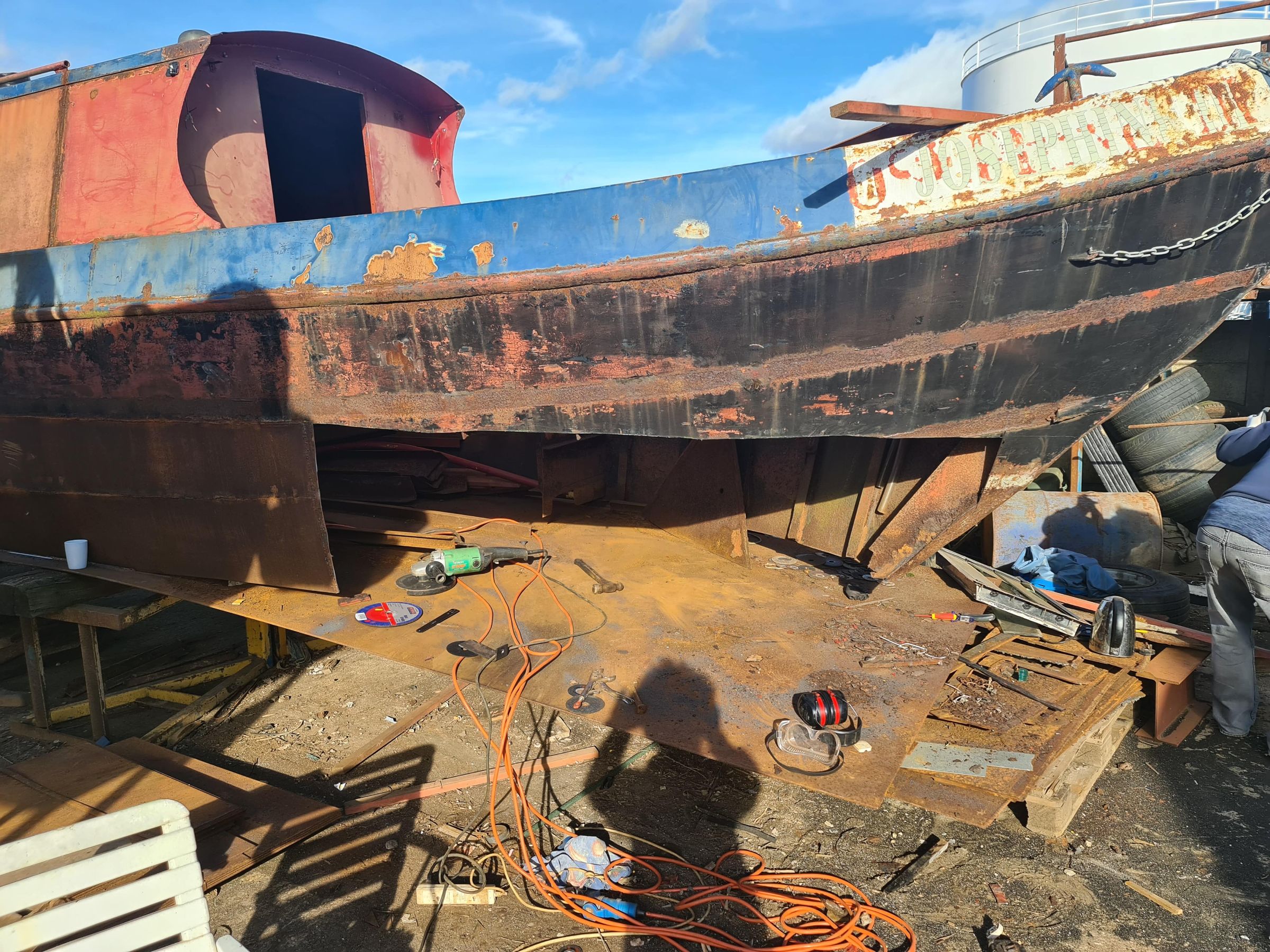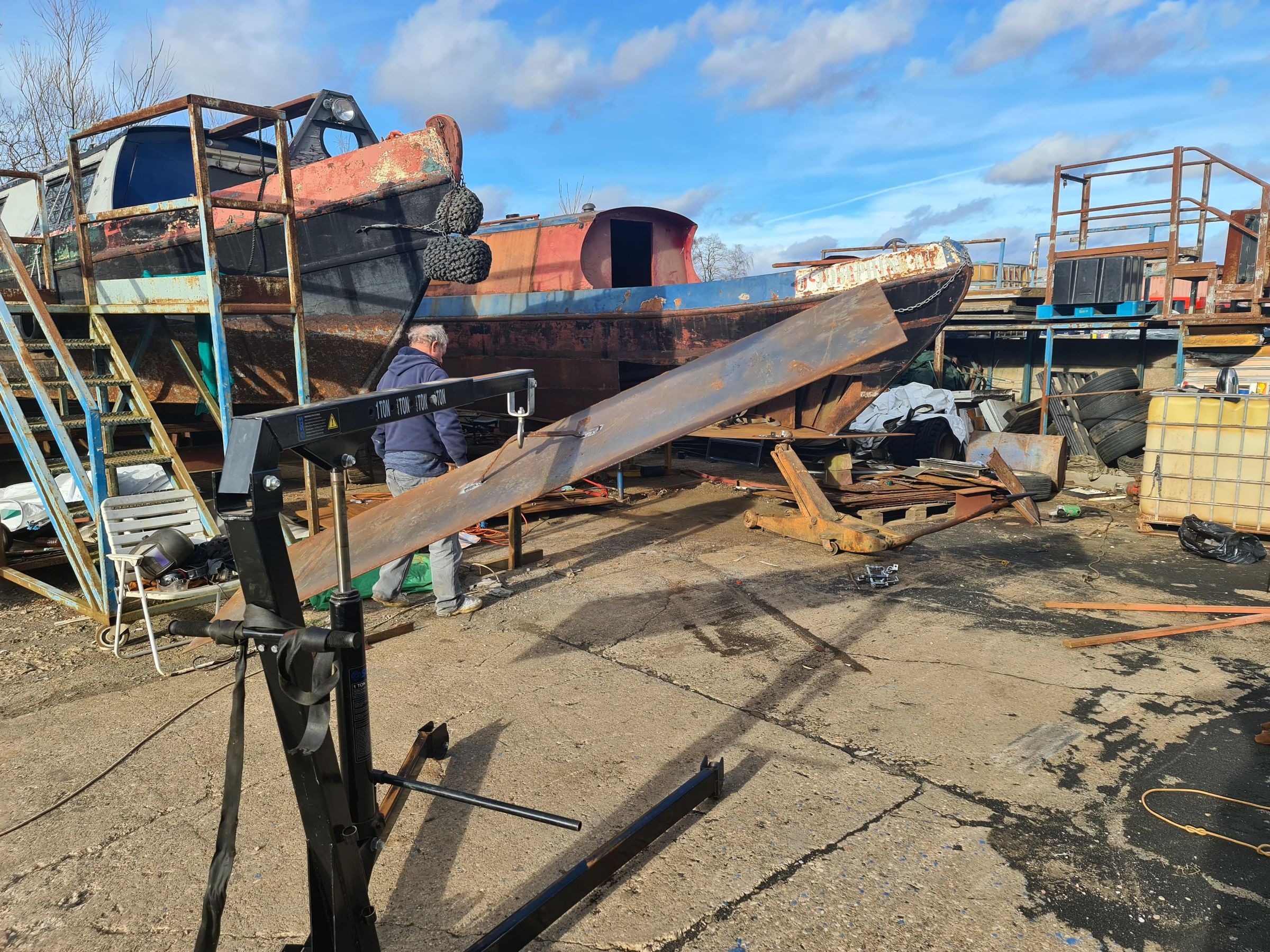Leaderboard
Popular Content
Showing content with the highest reputation on 19/02/23 in all areas
-
So...... Boaters are going to be in for a torrid time by the look of it yet here we are, on this thread, much of which is trying to see it from CRT's point of view hoping that the hammer falls on CCers, wide boat owners, splitting hairs over who uses the system more or less or who doesn't appear to have a licence - in fact we are all boaters using the system, we are all facing the same problems, we all depend on it remaining open or navigable and we should all be holding CRT's feet to the fire and writing to MP's (although that makes sod all difference ) and should all be making a general nuisance of ourselves and making life uncomfortable for those who decide the fate of the canals - and it;s not the fault of some scruffy individual with a pile of logs on the roof of his elderly boat.5 points
-
I just hope you take your new shiny boat to an lovely waterway somewhere and enjoy it, and learn from every day experiences, you might mellow out a bit. Otherwise, you are going to be severely disappointed in today's canals.4 points
-
This post cannot be displayed because it is in a forum which requires at least 10 posts to view.
-
Hi all, appreciate the discussion here. Alan - I've seen your comments about Whilton all over the forum but never any evidence. Perhaps you would consider sharing it again for a newcomer?4 points
-
I promise you, it's really easy. Let me show you how... With the top left corner of the sheet tacked in, the bottom of the sheet could then be pulled in to match the bottom of the hull side where it meets the baseplate. This was done (as ever) by welding an eyelet on the inside and pulling it into shape with a chain hoist, then tack it into place With that in place the front of the sheet can then be pulled round the existing bow, and used as a ruler to run a grinder along to ensure the plate fits spot on. The original hole is deliberately undersized and is effectively just cut for access. You'd be stunned at how little force it took to bend it, I could get it most of the way round by simply leaning on it. When the grinder has been run along it a pretty decent level of fit-up is achieved. Note the pitting above where the new steel is going in. It's a bit annoying but it's well above the waterline, i'm contemplating the best way to fill it in, possibly an epoxy fairing filler, possibly lead loading, open to suggestions Part 3 soon... Oh, and the fitment of bridge guards is a non-negotiable yes in my book, they look flippin great and they'll serve a 2nd purpose on the edges of my tug deck (whick you might be able to guess from a background theme in earlier posts...) (Edited due to weird duplicate)4 points
-
Hello all I hope this is ok? I’m a small time YouTuber on canal restoration. A few weekends ago I helped on a dig with KESCRG on Westfield lock on the eastern end of the missing mile. This involved digging things out mainly. Here is my video on it, I hope you enjoy https://youtu.be/HGxubEXzm4w This is what it was like at the beginning of the year when I was filming down there previously. https://youtu.be/M_D71X0mwLI I’ve also been there this weekend for another dig (not volunteering this time just filming) and will be there again in 2 weeks helping again with KESCRG3 points
-
This post cannot be displayed because it is in a forum which requires at least 10 posts to view.
-
This post cannot be displayed because it is in a forum which requires at least 10 posts to view.
-
Just to echo the general theme, engine and electrics. And specifically, find out what engine you've got and there'll probably be a youtube video on how you service it. If there isn't, get a pro to do the first service, but only on the understanding that they explain the steps to you as they go- you can offer a few more quid as this will slow them down a fair bit. You can also video them doing the service so you have something to refer back to. Fees do vary wildly, but I've been asked for almost £200 to do an engine service including alternator belts, and you very quickly realise that there's a lot of money you can save by doing the servicing yourself. The thing about the batteries is that you need to be aware of their state literally within minutes of you first moving onto the boat. I didnt look at my batteries until the second day, and by then they had already been over-discharged and probably damaged by my ignorance, and the cost of those mistakes will be a few hundred quid for a new set. So check the battery voltage when you get aboard, and keep an eye on it every hour or so throughout the first few days.3 points
-
After 30 years sailing, when bought my own seagoing boat in 2006, I did the RYA diesel engine course and, to give my wife a gentle intro to boat handling, we did did the Helmsmans course. Bothe served us well, and I can recommend them. The next most useful thing would be a knowledge of how batteries and charging sources work. Other than that, I learned things as they went wrong. YouTube videos are very useful, as is this forum, as long as you explain your issue, and ignore the curmudgeonly responses that often ensue from the usual suspects.3 points
-
I'd agree with you - BUT - only if the engine / fuel system has been well maintained and serviced, and, the fuel is regularly checked for water and dieselbug. Have a look back over the last 2 or 3 months postings (crys for help) and compare have many have been "engine based" and how many have been 'battery based' questions. I cannot think of a single 'battery problem' thread but there have been a number of "I've got diesel in my engine'", " it wont start" "I've got white / black smoke', "It keeps overheating" and several more. If you have a functioning engine you can recharge you batteries.3 points
-
This post cannot be displayed because it is in a forum which requires at least 10 posts to view.
-
After buying your boat, get River Canal Rescue to teach you how to service your engine. They come to your boat to teach you.3 points
-
Understanding batteries and being your own power station is quite important and an area that seems to hit a lot of boaters when their lights go out in the early evening and they have no power until after 8am the following morning when they can start charging again. Being considerate to fellow boaters and not being one of the modern "I'm all right so f**k the rest of you" brigade that are becoming more common on the cut.3 points
-
3 points
-
This post cannot be displayed because it is in a forum which requires at least 10 posts to view.
-
Hi Only just seen this thread... great to see she will be coming back to life It was built by Fernie Steel Fabrications (of Fernie Road, Market Harborough) and I believe was fitted by Blisworth Tunnel Boats who first ran her, new for 1975 (in orange gunwhales/roof and white sides). When Black Prince took over at Blisworth she then stayed with them for a number of years and went into the blue & yellow colours Here is the other info I have on her, from when I was running the Black Prince owners/info site Dan The pictures are: Another boat from the Blisworth Tunnel fleet in 1975 to illustrate her original colours The 1979 Black Prince (B & W) brochure entry (The first year under their command I believe) Her failing to make the turn at Norton Junction in the '80s, that I was sent2 points
-
I disagree with the first two. They should be "battery management". Maintaining batteries is easy. Just keep them topped up with distilled water. It's learning to manage their state of charge that really stretches newbies and defeats a good number of them, causing them to throw in the towel and sell the boat because they totally underestimate the degree of commitment needed to learn about it properly. No-one yet has posted a link to the Battery Primer here. 'Essential reading' barely covers how important it is to read and understand all that Tony (Wotever) wrote on the subject. The absolute definitive article for lead acid battery users. (Disregard virtually all of it if you have li batts.) Link here: https://www.canalworld.net/forums/index.php?/topic/95003-battery-charging-primer/2 points
-
Don’t forget you’ll need a beer cellar! No1 priority really. that’s my only regret not buying a 70’ boat, more room for beer beer beer2 points
-
The remarks from A DeE were "How quickly can you walk away ? They have history in selling boats with a good survey which have sunk on the first cruise by the new owner.(taking the boat home) " I agree that these are remarks which should not be made without evidence to back them up. I think we all agree that there are circumstances which can cause a hull to deteriorate quite quickly and examples of that have been given but these in no way back up that statement.2 points
-
I'm still at the naive stage. I'll learn to hate CRT later 😉.2 points
-
This post cannot be displayed because it is in a forum which requires at least 10 posts to view.
-
And appreciate that sometimes the knowledgeable folk here may need more information than you have provided initially to diagnose whatever problem you have. So if you are asked supplementary questions, they are to help, not to catch you out. And if you can't answer straight away (for example because you won't be visiting the boat for a fortnight) much better to say so than to go silent, leaving others to speculate why you aren't helping them to help you.2 points
-
Indeed, I only hired one boat with bridge bars, that was enough. The way they curve means that it is very difficult to judge exactly where they are, so that you frequently bang your head on them, often painfully,when trying to get on or off at the bow.2 points
-
All this chat about float charging on lithiums is asking for trouble AIUI. As Nick says, one needs to STOP charging when any one cell gets up to 3.65V. For the most comprehensive seemingly knowledgable article I've ever read about LiFePO4 batteries in boats, this chap is well worth reading. The link has not been posted on this forum for a while now so it's time it had another outing. https://nordkyndesign.com/protection-and-management-of-marine-lithium-battery-banks/ Li batts in boats still strike me as immature technology, mainly because Li batts like to be cycled over a wide range (not kept well charged like LA batts) and most Li users still seem to have the LA mentality engaged and write in ways that imply they keep their Li batts constantly charged. E.g. using a charger with a 'float' setting. One really should not be doing this. Charge them, then discharge them low before re-charging almost fully. Don't put them on float so they get recharged after a small discharge. What the boating world needs is some devices that monitor the SOC somehow and keep the charge sources disconnected until it falls to a low value, then reconnects until charged to a high SOC, then disconnects, etc etc.2 points
-
This post cannot be displayed because it is in a forum which requires at least 10 posts to view.
-
Unless you buy a rust bucker AND have the facilities to get it out of the water, welding would be very low down the list. If it is in tolerable condition inside, then woodworking is only marginally higher up the list. You missed out preparation and painting because unless you will be able to afford several thousand pounds (£5000 to £10,000 say) every 10 years or so you will be repainting the boat. The advice to get to grips with batteries and the charging is arguably the most vital skill because if you don't get your head around that expect to be paying well over a hundred a month for new batteries that you have ruined - and just to help some battery "gauges" seem designed to help less aware boaters destroy their batteries. I would put learning to maintain and diagnose engine and drive line faults to be very important, but they are pretty reliable given reasonable maintenance (including de-watering the fuel tank annually) so I would put this third from top. That just leaves the electrics, learning the circuits and how to test them using a meter. An electrical fault can stop you starting, prevent you getting any water, in many cases flushing the toilet and can leave you with no lights so I would make this the number 1. The notes Arthur refers to are on www.tb-training.co.uk, but they were course notes, the "how to do it" were hands-on during the courses that no longer run, although the RYA franchisees offer engine courses of variable quality (in my opinion), so if you decide to pay for one ask for recommendations. Either privately by email to myself or by posting on this forum will get you answers to the many questions that you will have.2 points
-
Yes, I'm already doing a lot of reading on here about charging states, etc. I think battery management is definitely going to be a focus. No worries on the considerate boater front. I'm a community-oriented person, and somebody that really respects the tradition of the lifestyle.2 points
-
With a low-skill level, initially, I'd arrange to have plenty of money available (so you can pay someone to do the work, watch them, and learn for the next time it breaks). The most important thing to learn is the fuel system & keeping the engine / gearbox running (forget electrics and water you can manage without them) if the engine is working you are never stuck in the middle of nowhere and can always get to someone to sort out other peoblems.2 points
-
I was wondering if you'd spotted that triangular hole. My last boat was quite deep drafted and built with the baseplate flat and the triangle infilled (rather than the baseplate jacked up as most new boats seem to have), and it actually a bit of a pain. The extra 6" of draft right at the pointy bit meant I sometimes couldn't put the bow in as close as I'd have liked to the bank when single handing. Or rather, with the jacked up baseplate style I'd have been able on occasions to get 2ft closer in which I'd have preferred. So basically I'm suggesting you jack up your baseplate rather than infill the gap. Means you'll need a bit less ballast at the bow too, once you're afloat.2 points
-
Above inflation licence fee increases are unfair to all boaters. It is the inevitable consequence of moving waterways to the third sector to remove financial burden from the tax payer.2 points
-
Updates... This will probably be a multi-part update because of the upload limit, so bear with. 1. My friend has bought the boat next door, i'm trying not to get too involved but we'll see how that goes... 2. I found this MEGA picture of my boat in action as a hire boat with Black Prince from this thread: (It's the one at the top...) Weirdly it doesn't have its banana irons on in the picture, maybe a spirited hirer had knocked them off? 3. I chopped a big hole in the front then filled it in. A hole; Because of the size of the sheet being twice the size of the bits we were putting in by hand we thought it was a good idea to crane it into place rather than try to lift it. I welded an old anode frame onto the sheet and picked it up with the engine crane, which worked very well The Plate was then welded in its top left corner (as you're looking at it there) and then the manipulation began. Brace for Part 2...2 points
-
This post cannot be displayed because it is in a forum which requires at least 10 posts to view.
-
A problem with charging lithium optimally and not too hard, is that one really needs to know the charge current. Unlike lead acid, Li will charge at the maximum current the charge device can provide, until it is very nearly full. When the voltage finally becomes constant, and at the sorts of charge currents we are talking about, the current drops off very quickly perhaps only taking 5 mins to drop to the 5% of capacity one is looking for to terminate charge. The nominal “5 minutes” obviously varies somewhat depending on the charge rate as a % of capacity. Without knowing the charge current, any charge device has to guess how long to hold the absorption phase before going to float. What is best avoided is a long period of holding the charge voltage up near the maximum, with very little current flowing into the battery. Golden rule for charging Li is charge to the specified voltage, up to 3.65v/cell, and then STOP charging as soon as the current decreases to 5% of capacity! Of course if the charger goes to float and the float voltage is such that it matches the resting voltage of the battery (around 13.2 or 13.3v) then fair enough - the battery doesn’t realise there is a float voltage being held. But IMO a good design is one that doesn’t hold the voltage up at 13.8v or more once the charge current has fallen off.2 points
-
Lolololol!! I'm sure that's probably just a thoughtfully concealed bilge pump skin fitting..... Hull looks fine to me. Just make sure Alan doesn't come round checking what bulbs are fitted into the nav lights, lol!2 points
-
Hope they filter out the PM2.5 emissions, else there will heaps of bodies in the surrounding towns and villages.1 point
-
A lot of the discussion is about operating the boat - but just as important, is operating yourself; liveaboard life can be very different from that on the hard with respect to interactions with others, both in authority, casual acquaintances and closer friends. So there's keeping the boat tidy, keeping yourself tidy, keeping stocks of food and other supplies around (and in date and in good shape) without (sometimes) the presence of others to keep you on the straight and narrow. Plus, if you're working, not only navigating the boat, but also navigating to/from a workplace either by your own or public transport....1 point
-
Ran down there today from Hawkesbury. Only wanted to check the place out to see if it had changed much in nearly 20 years, but could have skipped it (or gone yesterday) if I'd known Maybe the Portuguese cakes offer some consolation1 point
-
When did you run down to Coventry? We left there yesterday morning up to Atherstone and down the flight this morning. It was lucky because I had forgone I had received the email. I couldn't stay in Coventry to long as I would get as fat as a pig on cooked breakfast and Portuguese cakes .1 point
-
This post cannot be displayed because it is in a forum which requires at least 10 posts to view.
-
One of the problems with Li is that you can’t easily charge to some desired SoC such as 90% by means of controlling the voltage. A voltage as low as 13.4v will get you to 99% eventually. It will just take longer than charging at 14.6v. So if for example you charge at 14.0v all the time you are out on a day’s cruise, then you will still be 99.9%SoC and you will still have been holding the battery there for hours, which is not good. If the charger uses timing to switch from bulk to float or off, then you have a problem if you stop for lunch and then restart with batteries already at 99%. All of which is why I use the BMV712 SoC to control charging - having of course synchronised it at 100% from time to time. I can’t see any other way of doing it.1 point
-
Ah yes, that's the other guy I read end-to-end a few years ago. I see he has now written a load more, thanks. His writing style alienates a lot of people but cut him some slack if you can manage it and persevere, the knowledge is well-worth the effort. He is American, but we all have our crosses to bear...1 point
-
Let's hope so, the canal system is not a housing authority. People fallen on hard times should not have to resort to living in knackered old boats.1 point
-
This post cannot be displayed because it is in a forum which requires at least 10 posts to view.
-
Is the consultation a done deal? https://canalrivertrust.org.uk/national-consultations/consultation-on-future-boat-licence-pricing-faqs Tough or even "unfair", especially for genuine continuous cruisers?1 point
-
It will probably be the older cars for which replacement items can be made by a decent engineering workshop, that will last longest. It is the more recent cars that use sophisticated electronics modules which are often specific to a particular model and manufactured in the Far East, that are likely to become scrap sooner, when replacements for items such as their multifunction touch screen displays that are replacing physical switches and instruments, are no longer available. The very expensive manufacturing plant required to make such items means that they cannot be made by independent suppliers in the same way that mechanical items can. An acquaintance who runs a 1948 Jowett Javelin, had a linkage fail in its gearbox last year, and was able to source and fit a replacement in a week. I would not be surprised if the high cost of EVs and Hybrids, combined with issues with charging EVs by those who do not have off-street parking, leads to the continued presence of many older IC cars on the roads. We could end up a bit like Cuba after Castro took over and import of new cars was blocked.1 point
-
1 point
-
Just a thought, but there is an interesting thing you see with lithiums (and its a behaviour that you'll observe as you get more used to them) :- if you charge at a low current level, they will get to a higher SoC before the charger goes into float (or stops), than if you charge at a high current. For example, I found that if I charged my lithiums at a high current level of say 100-120 amps (with both MPPTs going plus some engine charging with the B2Bs), they only got to about 75% full before the chargers all went into float. But if I charge at say 30 amps, the SoC can get up to 90% or more before the charger go to float. Most of the long term lithium users here go for a bulk charge voltage of 13.8/13.9v or so. So bear in mind when selecting a bulk charge voltage for the MPPT, that on some sunny days, because higher charging currents will push up the voltage compared to lower charging currents, you might end up with a slightly less full battery when you get home, in terms of the SoC it reached. (And our lithium expert Nick has confirmed this is a thing, its not just my fevered imagination). Strictly speaking this is part of the 5 hour lithium lecture, which I will be touring around the towpaths of Cheshire this Spring and Summer. Book your tickets early.1 point
-
I expect the government wouldn't know the difference between a river and a canal.1 point
-
Drag fatso out of the tunnel apply gas axe and leave remains as a warning. Bit like the French have done with crashed cars.1 point
This leaderboard is set to London/GMT+01:00





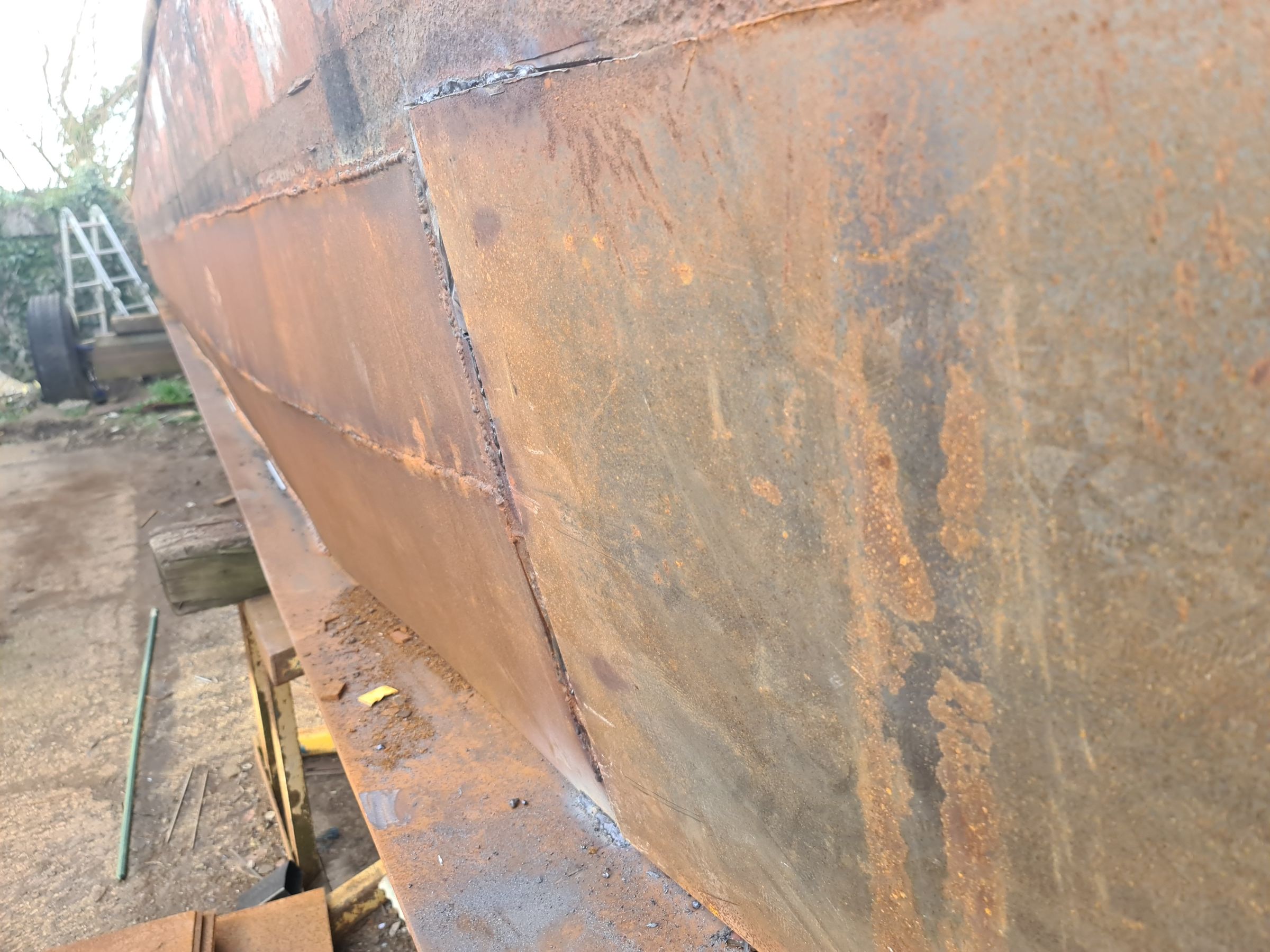
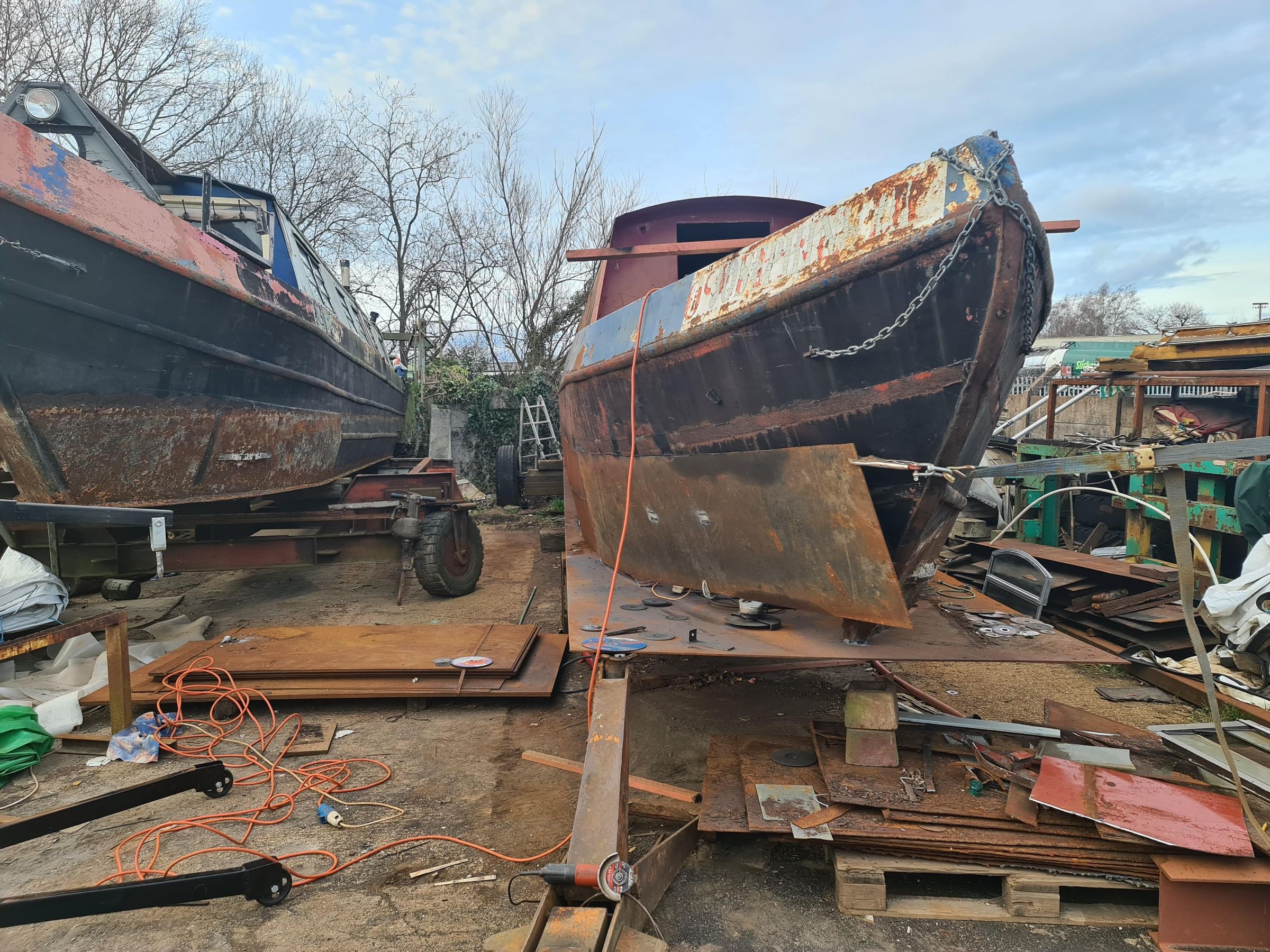
-min(1).jpg.3a30043d80e3f651b7acf09cca4118c4.jpg)





